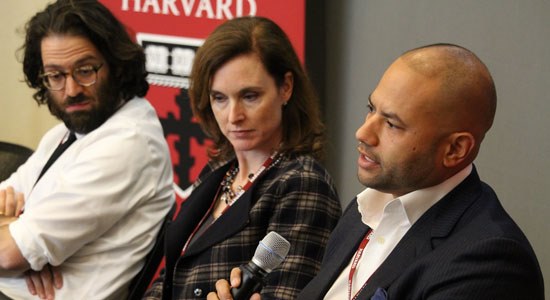We just wrapped our fifth Dell World, a week-long series of engagements that celebrate the amazing things our customers are doing with Dell solutions. We are obsessed with helping them achieve success today and, even more important, prepare for a future that is ripe with massive opportunity. We call it the Future Ready Enterprise.
Today, we’re taking Future Ready to a new level with Future Ready Economies, an initiative that seeks to answer these questions: What makes a city well-equipped for the future? And which communities are getting it right?
We started by looking out our front door. I tend to think our fast-growing hometown of Austin, Texas, understands what it takes to be successful (take a look at a great video about Austin here). But I’m biased. So, we went to Harvard University and joined other leaders from business, government and academia to define what’s required for economies to be future ready.
At the 2015 Strategic Innovation Summit on Enabling Economies for the Future, we collectively identified the three pillars of a Future Ready Economy:
- Human capital, or people equipped with the right skills to drive meaningful social and economic change;
- Infrastructure that is prepared to support the people, businesses and technology needed to drive growth and change; and
- Commerce or sustainable business opportunities to continue improving entire economies for years to come.
(left to right) Entrepreneur Scott Stedman of Northside Media Group, joined by entrepreneurs Shawna Slack of Genesis Advisors and Anthony Tivnan of Magellan Jets.
After the Summit, Dell partnered with IHS Economics, part of industry-leading research firm IHS Inc., to build the Dell Future Ready Economies Model. IHS used the Summit findings to identify proxy indicators that could provide measures of the three pillars of a Future Ready Economy. This makes the Dell Future Ready Economies Model unique because it assesses an economy’s ability to function and thrive, rather than looking at an economy’s performance on a single dimension.
The Dell Future Ready Economies Model is a way to evaluate the future-readiness of cities, and it even provides a method for ranking the Top 25 Future Ready Economies in the U.S.
The Top 25 Most Future Ready Economies in the U.S. are:
- San Jose, CA
- San Francisco, CA
- Washington, DC
- Boston, MA
- Austin, TX
- Raleigh, NC
- Seattle, WA
- Denver, CO
- Portland, OR
- Dallas-Fort Worth, TX
- New York, NY
- Minneapolis-St. Paul, MN
- Houston, TX
- Atlanta, GA
- Charlotte, NC
- San Diego, CA
- Chicago, IL
- Louisville, KY
- Salt Lake City, UT
- Des Moines, IA
- Los Angeles, CA
- Pittsburgh, PA
- Kansas City, MO
- Columbus, OH
- Philadelphia, PA
As you can see, the 25 cities on the list are all over the country, which tells us success is no longer just about location. It’s about embracing strengths and important opportunities in entrepreneurship, education and technology infrastructure. And by looking at these cities and their attributes, other cities – and even businesses and leaders – can create policies and strategies that will enable their region and people to prosper and achieve strong economic health.
To learn more about the Dell Future Ready Economies Model and our initial results, please visit our new site, Dell.com/FutureReadyEconomies. You can also join the conversation with #FutureReadyEconomies.
Did your city make the list? Tell us why you think your city is future ready or what can be done to make it better positioned to meet the demands and opportunities of tomorrow.

